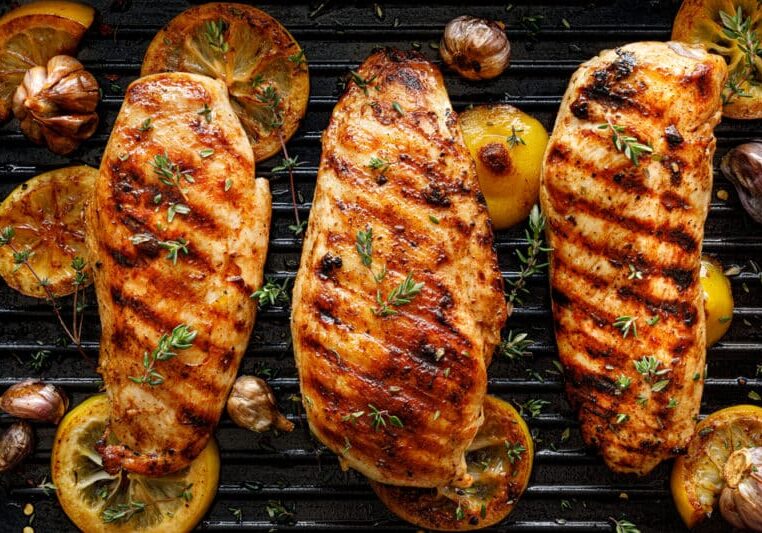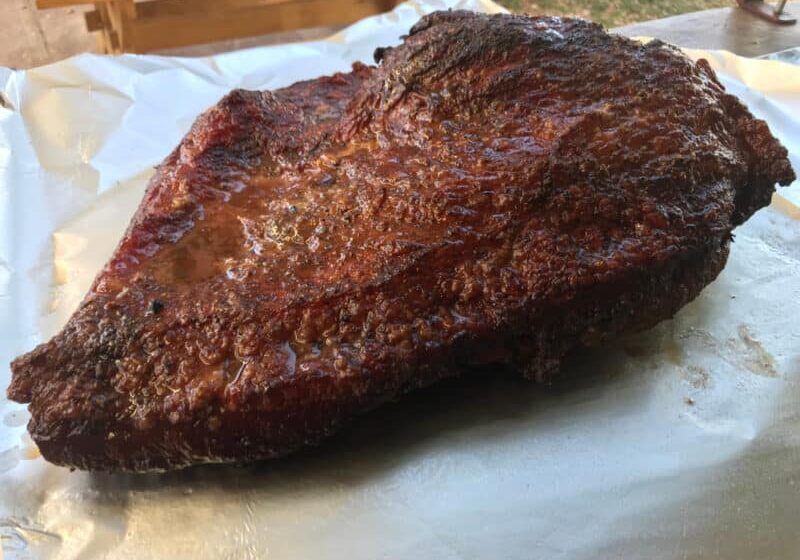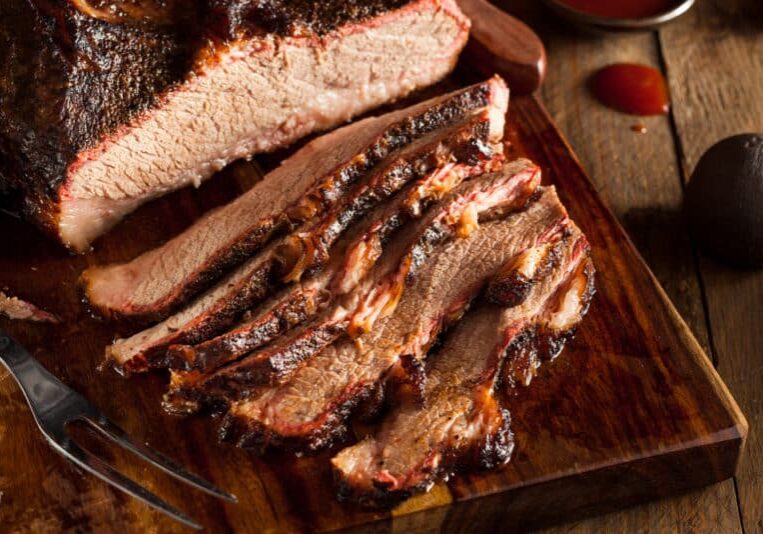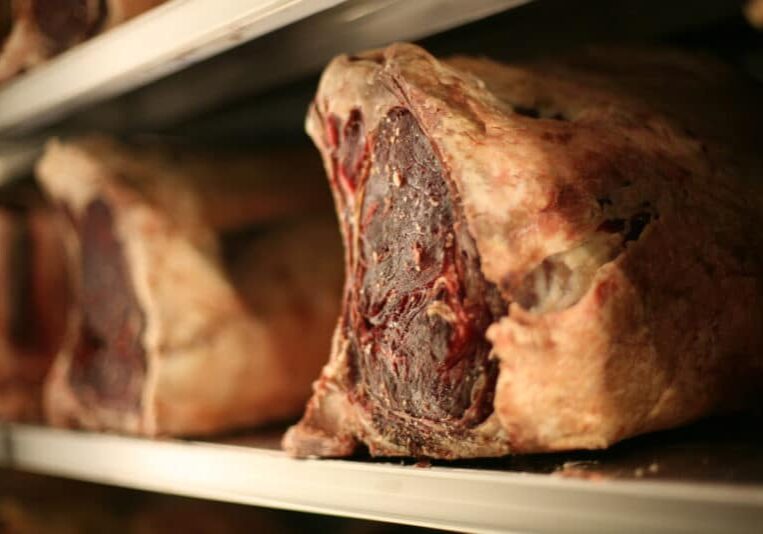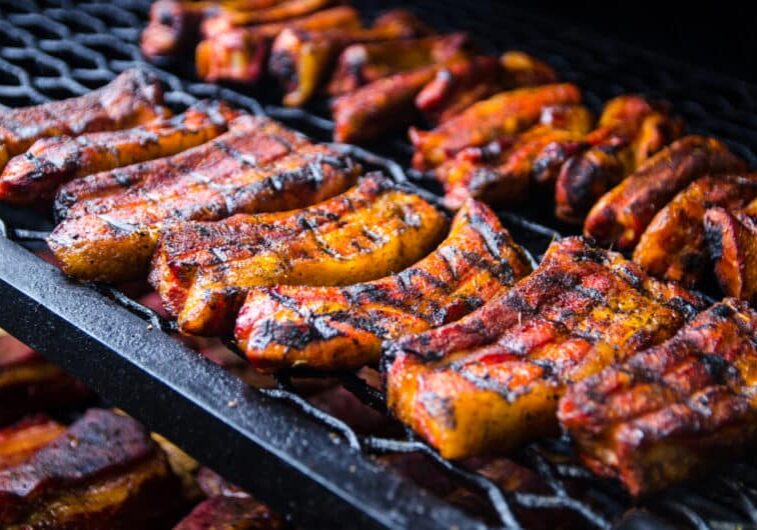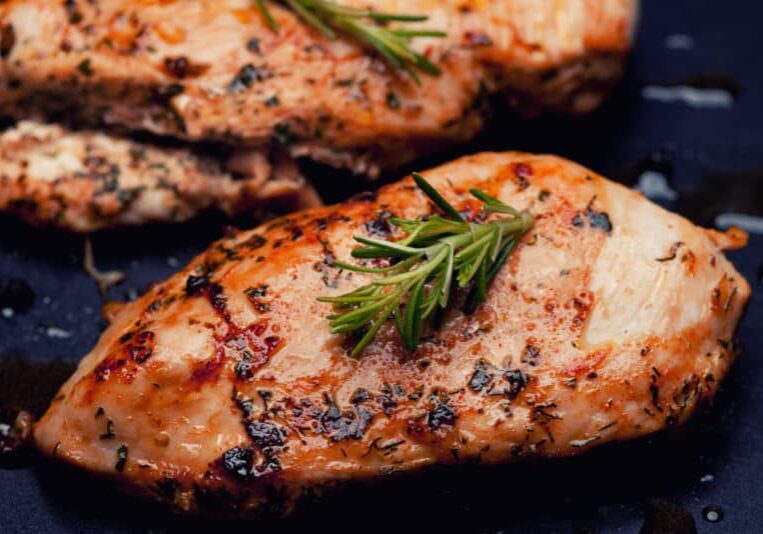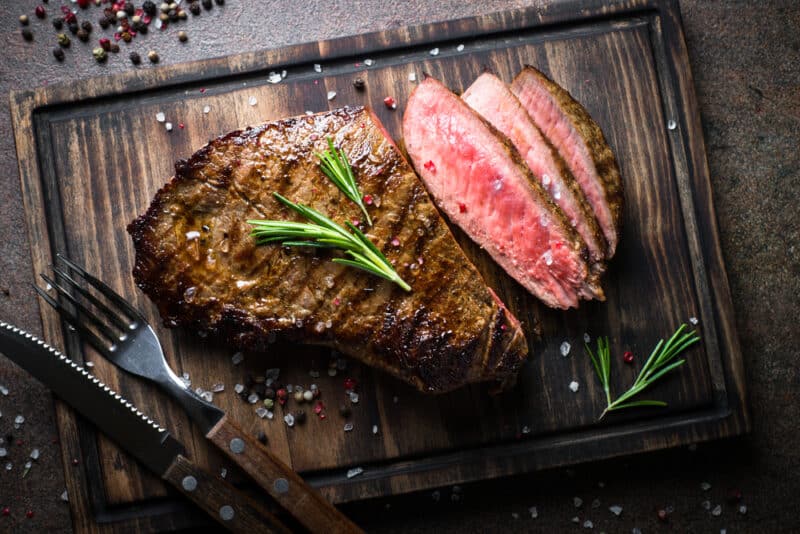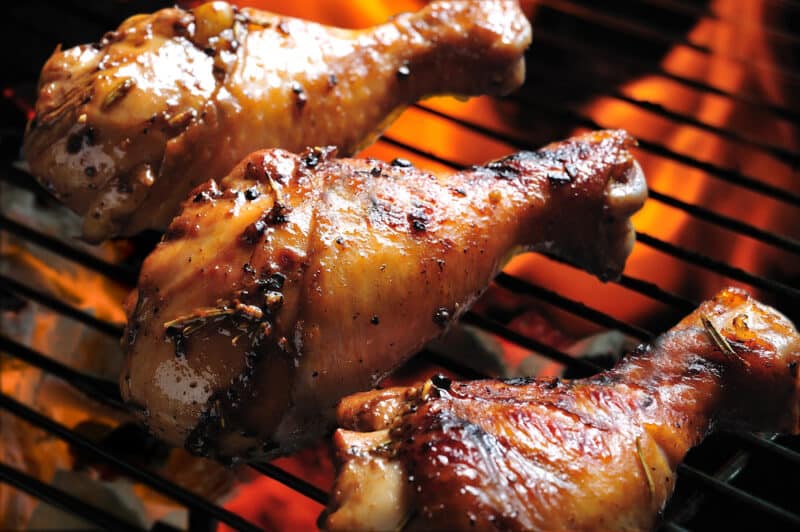Can You Eat Raw Steak? Use this Safe Method
TheGrillingMaster.com is reader-supported. If you buy something using the links on our site, we might earn an affiliate commission at no added cost to you. This helps us pay our staff to keep making awesome content for you!
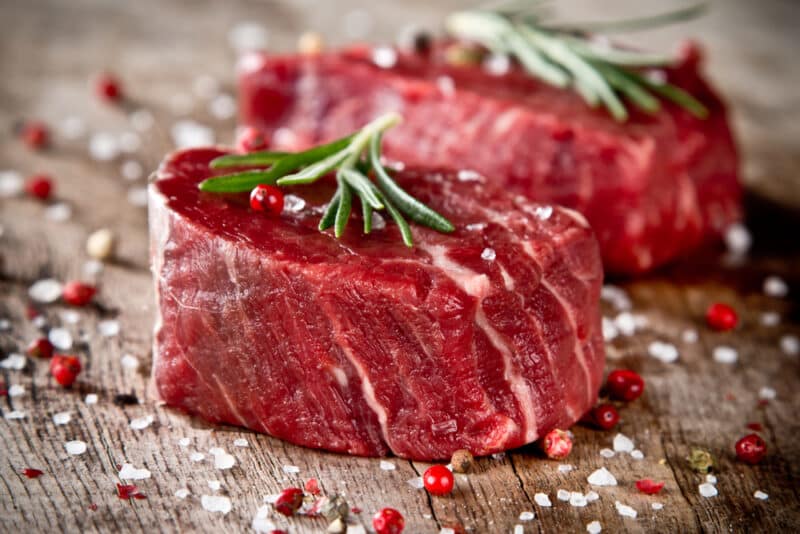
You can eat raw steak safely IF it meets some guidelines.
Many people all over the world find raw steak to be a tasty treat due to its distinctive taste.
Despite its appeal, many still choose to opt for a medium-rare or well-done steak for health reasons.
There has been much speculation throughout the years about the potential for people to eat uncooked meat. Here is a complete guide to shed some light on this subject, sharing facts about raw beef and how it might fit into a human diet.
If cooked properly, whether a raw beef appetizer or main course, can be just as enjoyable while being safe to eat.
Can You Eat Raw Steak?
If you’re going to eat raw steak, it’s important to get it from a trusted provider and store it correctly.
Meat that has been on shelves for a while is not safe to eat.
Additionally, frequent changes in temperature can lead to bacteria growth, which could be dangerous.
Therefore, it is wise to purchase the steak from a butcher who is experienced in handling such delicate dishes. Select a reputable local butcher, rather than a general grocery store, to ensure the highest quality and a reduced risk of bacteria.
If you get a high-quality piece of beef from a butcher or other source, you can enjoy dishes made with rare or uncooked beef.
This does not apply to pork or poultry; these meats must always be cooked completely.
Related reading >> How to best grill frozen steak.
What About Raw Beef Dishes on Restaurant Menus?
Certain steak dishes, such as steak tartare, are traditionally eaten uncooked. This dish is prepared with raw ground beef, a raw egg yolk, onions, and other ingredients.
It is not advised for the average person to make steak tartare at home unless they are a professional chef or know exactly how to correctly prepare it.
Steakhouses that let you order your steak raw likely source the highest quality beef and can tell you exactly where the meat is from. Furthermore, the chefs employed are experts in handling the meat to prevent any contamination.
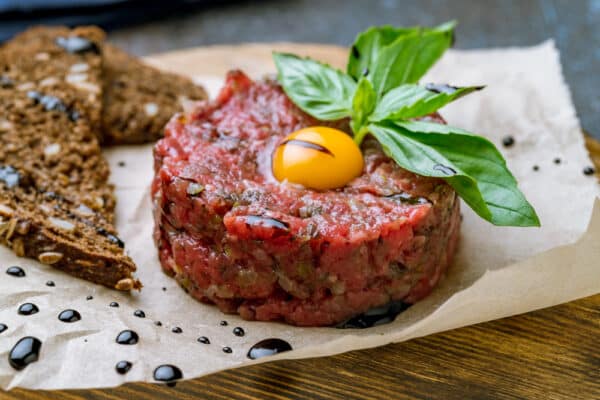
Steak Tartare – Image from Shutterstock
Common Raw Dishes on Restaurant Menus
This list shows common raw meat and fish dishes you might find on restaurant menus worldwide.
- Steak Tartare: Minced raw beef steak mixed with egg yolk, onions, and spices
- Tuna Tartare: Chopped uncooked tuna mixed with herbs and spices
- Pittsburgh rare steak: Steak that has been seared on the outside and left raw on the inside, also known as “black and blue steak”
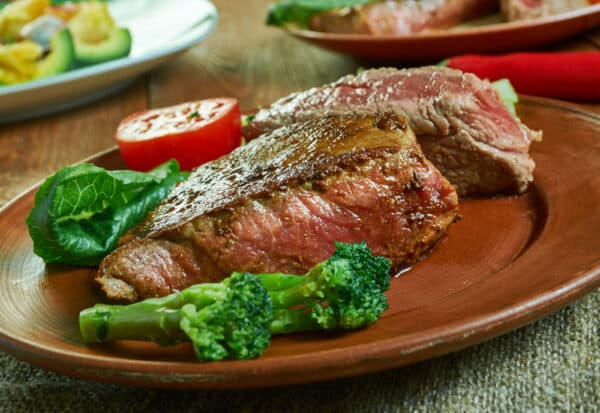
Pittsburgh Rare Steak – Image from Shutterstock
- Mett: A German dish of uncooked minced pork that’s flavored with salt, pepper, and garlic or caraway
- Kibbeh: A dish popular in North Africa and the Middle East is made of raw lamb meat

Kibbeh Filled with Raw Lambs’ Meat – Image from Shutterstock
- Some types of sushi: A Japanese dish consisting of rolls that contain cooked rice and often raw fish
- Kachilā: A popular dish of the Nepalese Newari community, made with raw meat of water buffalo, chicken, or lamb. The meat is minced and combined with garlic, coriander, chili, salt, and fenugreek seeds, which are fried in oil with turmeric.
- Ossenworst: A raw Dutch beef sausage originating in Amsterdam, which was originally made of ox meat.
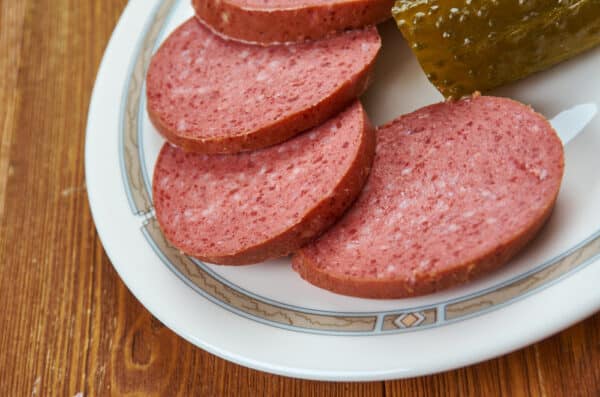
Dutch Ossenworst with Raw Ox Meat – Image from Shutterstock
- Ceviche: minced raw fish cured with citrus juice and seasonings
- Torisashi: A Japanese dish of thin chicken strips briefly cooked on the outside and raw on the inside.
- Fish or Beef Carpaccio: A dish from Italy made of thinly sliced raw beef or fish.
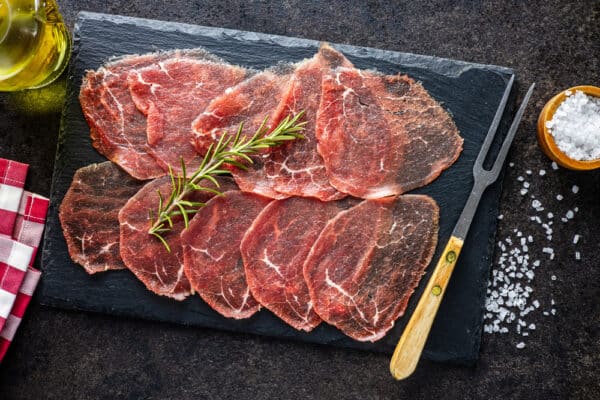
Beef Carpaccio – Image from Shutterstock
The fact that these dishes are found on many restaurant menus does not mean they’re safe.
Frequently, raw meat dishes will have a small disclaimer that reads, “Consuming raw or undercooked meats, poultry, seafood, shellfish, or eggs may increase your risk of foodborne illness.”
This warns diners that there are risks associated with raw meat intake and that it may not be safe.
Related reading: The benefits of eating raw steak
Minimize the Danger When Preparing Raw Meat at Home
It’s possible to eat raw meat, as long as you take the necessary steps to make sure it’s safe. The key is to get the beef from a reliable source and then make sure you follow the safety guidelines.
Meat that has not been cooked can contain dangerous bacteria like Salmonella, Listeria, Campylobacter, and E. coli, all of which can lead to food poisoning.
Nevertheless, these bacteria can be eliminated when the meat is handled and cooked properly.
Many people incorporate raw meat into their diet, such as kibbeh, carpaccio, and raw liver.
However, the customary methods of preparing the food lessen the likelihood of illness.
NOTE: Some butchers may puncture the beef to soften or tenderize it. However, this can result in cross-contamination, contaminating the inside of the meat. Thus, it is not advisable to buy meat contaminated in this way.
1. Meat Quality
Select the highest quality cut of meat you can find. It doesn’t matter if it’s filet Mignon, sirloin, or inside round, it’s essential to avoid any meat that has been treated with tenderizing needles. I personally have been grilling a lot of flank steak lately and loving it for tacos.
If you want to avoid meat with added ingredients and want to purchase ethically raised beef, you should go to a butcher who is known for offering high-quality meat.
Organic animals, grass-fed, and pasture-raised tend to have better immune systems, so they are less likely to contain parasites or bacteria than those that are raised on factory farms.
Factory-farmed cattle are often given growth hormones and antibiotics because of the unnatural environment they live in.
Talk to the people at your local butcher and let them know you plan to eat the steak uncooked, so they can give you advice on how to do it.
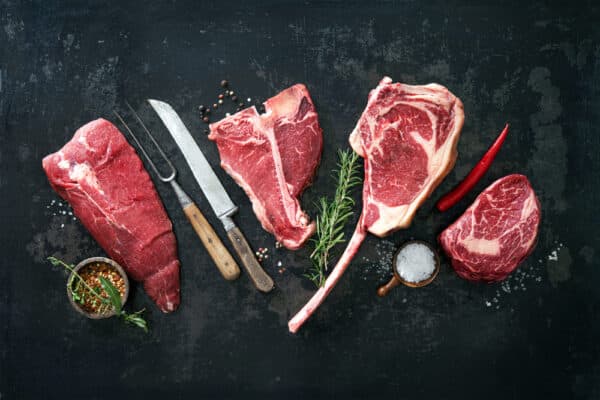
Various Raw Beef Steaks – Image from Shutterstock
Related Reading >> Brisket Flat vs. Point Cuts
2. “Peel” the Steak
Microorganisms can be present on the surface of the meat that was exposed to air.
Although Tartare recipes do not require this, it is always a good idea to “peel” a thin layer off the surfaces of the whole piece of steak before preparing a raw meat dish. Bacteria do not penetrate thick beef cuts.
Another way to achieve this is by searing the surfaces. The heat will destroy the microorganisms.
3. Grind the Beef Yourself
Rather than buying pre-ground meat, it is advisable to go to a butcher and get some good steak cuts (e.g., tenderloin, sirloin, etc.).
Let the butcher know you are going to make steak tartare, so he can provide you with the freshest meat.
The meat should then be chopped with a very clean knife. This is the safest way to prevent bacteria from spreading, as contamination is most likely to occur during the grinding process.
Furthermore, once a whole cut of beef is ground, there are more surfaces that can become contaminated.
4. Avoid Cross-contamination
Take care to avoid mixing the peeled surface meat with your ingredients.
After you have finished peeling the meat, make sure to thoroughly wash your hands, cutting board, and cooking tools. The following precautions are essential:
- Wash your hands with hot soapy water and dry thoroughly before and after touching raw meat and poultry.
- Ensure that juices from raw meat do not come into contact with other foods.
- Thoroughly clean all utensils, equipment, and surfaces that have come into contact with raw meat and poultry before contact with other foods.
- Use a separate cutting board and knife specifically for raw meat if possible.
- Store raw meat at the bottom of the fridge to stop any dripping onto other foods.
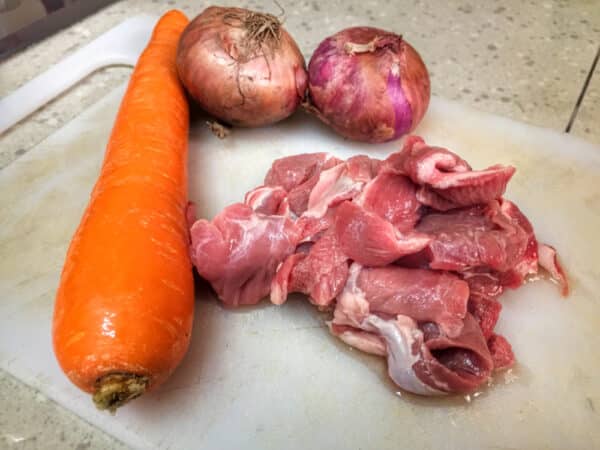
Cross Contamination – Raw Beef and Raw Vegetables – Image from Shutterstock
5. Maintain the Cold Chain
It is essential to store raw meat in the fridge (at or below 41°F) until you are ready to cook it, as the bacteria that usually cause food poisoning can spread quickly when the meat is at room temperature.
When purchasing raw meat from the butcher:
- Refrigerate it quickly
- Avoid leaving it in a hot car, use an insulated cooler with an ice-pack instead
- Once you reach home, place the raw meat in the refrigerator immediately – do not leave it on the bench top.
6. Safe Storage of Raw Meat
It is essential to be mindful of the temperature danger zone above 40°F when handling raw beef, as proper storage is key in controlling bacterial growth.
Avoid preparing raw beef dishes in advance. Eating it immediately is the best way to reduce bacterial growth.
Moreover, freezing can negatively affect the quality of the meat and ruin any raw meat dish.
Related Reading >> Best Internal Temp for Brisket
Nutrition of Raw Steak vs. Cooked Steak
People who eat raw beef say that its nutrients like vitamins C, B1, B9, and B12 are easier for your body to digest and absorb since cooking destroys them.
It’s also said that cooking boosts the amount of vitamins A, K, and E since it breaks down cell walls, making these vitamins more available.
It’s not possible to do research on people comparing nutrient absorption from raw and cooked beef since raw beef carries a risk of making people very ill or even killing them.
Studies have been done on mice, but so far, there’s been no clear answer.
How to Tell Whether Raw Steak is Bad
It’s important to check for bad smells and colors when it comes to raw steak.
Spoiled red meat will have a rotten, slightly sweet smell and the outside will be gray, not red.
If you notice either of these signs, the meat has likely begun to spoil, and it’s best to avoid it.
Smell and color are the two clearest indicators that the beef has gone bad.
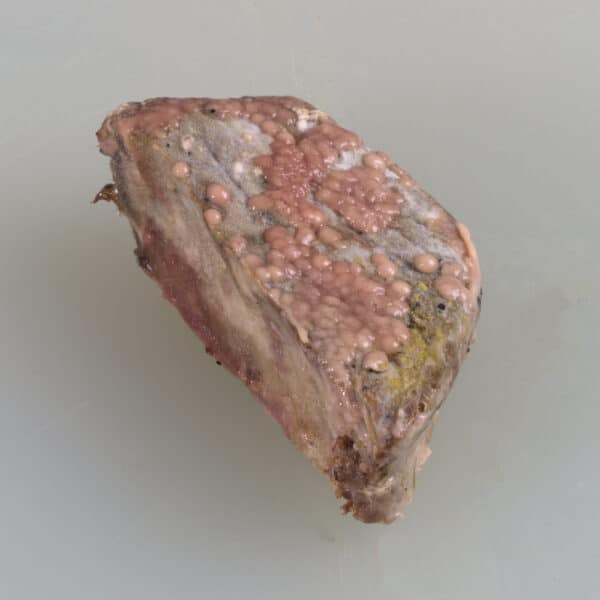
Contaminated Beef Steak – Image from Shutterstock
Related reading >> Not a fan of raw steak? If Jerky is the closest you plan to get to eating raw meat, here’s what you should know about The Best Meat for Beef Jerky.
Health Risks Posed by Raw Meat
Although raw meat is not a deadly risk for all, people with weak immune systems, kids under 5, seniors over 70 with health issues, and pregnant women should avoid it.
Many people like eating raw steak, but they could easily be exposed to bacteria that could give them a stomachache. In some cases, food poisoning can get worse very quickly, and may even lead to death.
Parasites
In the slaughtering process, sometimes an animal’s guts can be mixed in with the meat that is meant to be eaten.
If the animal had parasites, these could then get passed on to the meat.
The parasites can go into the meat, and not just stay on the surface, so if someone buys meat that has been through this process, they could be at risk of ingesting parasites.
If you decide to make a raw steak recipe, you may end up with parasites in your guts.
They can grow quickly, leading to a large problem. When you get any of the parasites listed below, you may experience vomiting, diarrhea, cramping, and a high fever. In more serious cases, it can get even worse.
However, if you cook your steak to the recommended temperature, it’s less risky because the heat can kill off any bacteria that are there.
1. E. Coli
These bacteria can usually be found in the guts of animals and people, and it often doesn’t cause any harm for a while. But sometimes it can cause many unpleasant issues.
But if you eat contaminated steak raw, you could end up with E. Coli.
2. Salmonella
Eating raw steak can expose you to Salmonella which could give you some nasty food poisoning symptoms.
However, the bigger danger is that Salmonella can travel to other parts of your body, like your blood, bones, and organs, and make you really sick.
It’s usually found in the digestive tract of animals without hurting them.
3. Listeria
Listeria is a type of bacteria that can make you very sick if you’re infected by it. It’s most commonly found in cows, poultry, and even dirt.
Unlike other bacteria, you won’t notice any symptoms right away – it typically takes at least 24 hours after eating contaminated beef.
Once it takes hold, you can get anything from mild to severe symptoms, like nausea, vomiting, fever, and body aches.
People with weakened immune systems or pregnant women can be particularly affected, and Listeria can even lead to miscarriages or early births.
Other organisms that could cause foodborne illnesses if you eat contaminated raw meat include:
- Clostridium perfringens infection
- Campylobacter infection
- Norovirus
- Staphylococcus aureus
- Escherichia coli
- Listeria monocytogenes
- Trichinella – a microscopic parasite that causes trichinosis
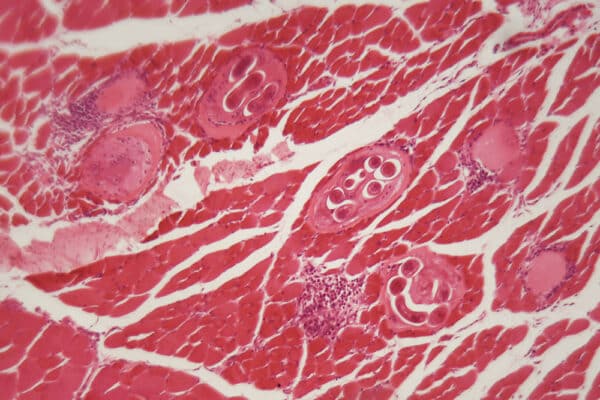
Beef Contaminated with Trichinella Parasites in the Muscles – Image from Shutterstock
Frequently Asked Questions
1. How rare can you eat steak?
Steaks should be cooked to an internal temperature of at least 145°F (63°C) and allowed to sit for 3 minutes before cutting or consuming, while ground beef should be cooked to at least 160°F (71°C).
Cooking a steak to a minimum internal temperature of 135°F (57°C) for medium-rare, or 125°F (52°C) for rare, still increases your risk of foodborne illness but to a much lesser degree than consuming it raw.
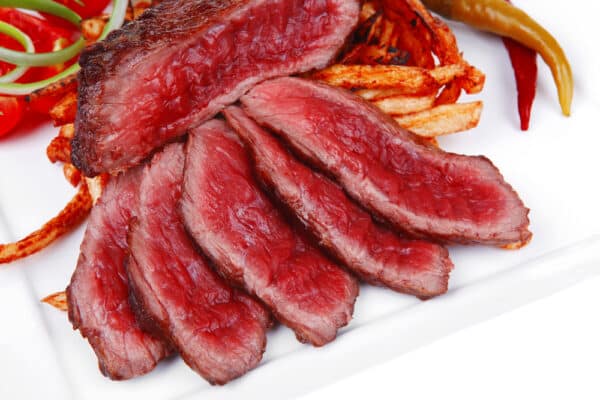
Rare Beef Steak – image from Shutterstock
2. What happens if you eat slightly raw steak?
Many people ask, “Can you eat steak without cooking it?”
Though some folks eat raw steak every so often without getting sick, it can contain dangerous bacteria that may lead to food poisoning and make you feel uncomfortable with digestive symptoms such as bloating, vomiting, nausea, and diarrhea.
3. Is the red juice on your steak plate blood?
Even the rarest and reddest steaks don’t contain any blood.
The red juice on your plate is actually made up mostly of water (75%), plus a protein in muscle tissue called myoglobin.
4. Is pink steak safe to eat?
You can safely eat steak that is pink in the middle if it has been handled and cooked properly.
To be on the safe side, it’s better to go for a medium or medium-rare steak
This means the steak will be heated to an internal temperature of 130–135 degrees for medium-rare, and 140–145 degrees for medium.
5. How can you tell if steak is raw?
To tell if a steak is raw, look for a deep red color with no browning around the edges.
The steak should also feel cool and won’t bounce back when you press it lightly with your finger.
6. Can you ask for raw steak at a restaurant?
Yes, you can usually ask for raw steak at a restaurant.
Many places that specialize in steak have high food safety standards and are happy to give you what you want. They often take pride in serving their steak raw.
However, that is no guarantee that it is safe to eat raw steak at a restaurant.
7. Is raw canned beef safe to eat?
Canned beef is a type of preserved meat. To make sure it’s safe, it typically goes through a high-temperature heating process to preserve it, which kills the bacteria. This means the meat should be safe to eat.
8. Can you eat raw ground beef?
It is not a good idea to eat raw ground beef because it may contain bacteria that can cause food poisoning.
Steak tartare and Kachilā are both delicacies made with minced meat that is raw and could make you sick if it’s not cooked.
Ground meat that’s been pressed together can have gaps where bacteria can get in, so it’s best to give it a quick sear with high heat to make sure some heat passes through.
Conclusion
In conclusion, while there are potential risks, such as the presence of harmful bacteria, associated with eating raw steak, many of these risks can be minimized through careful preparation and handling.
If you choose to eat raw steak, it is important to purchase high-quality cuts from a trusted source and to keep your food-handling practices clean.
Additionally, be sure to consult your doctor if you are pregnant, have a weakened immune system, or have any other medical conditions that may put you at risk.
Taking these precautions can help ensure that your steak is safe to eat.
Learn More About Grilling
If you want to learn more about grilling, check out these other helpful resources!

Kevin Turner
Hi there, I'm Kevin Turner, Founder and CEO of thegrillingmaster.com. I started this website to share my passion and knowledge with you. You can leverage my years of experience as a pit master and professional to grill great food!
About The Grilling Master
Hi there, I'm Kevin Turner, Founder and CEO of thegrillingmaster.com.
My passion has always been grilling, smoking and BBQ delicious meats that satisfy my inner carnivore!
I started this website to share my passion and knowledge with you, the hungry reader who wants to prepare the perfect meal.
You can leverage my years of experience as a pit master and professional.
Send me a message and let's connect on Twitter here.


